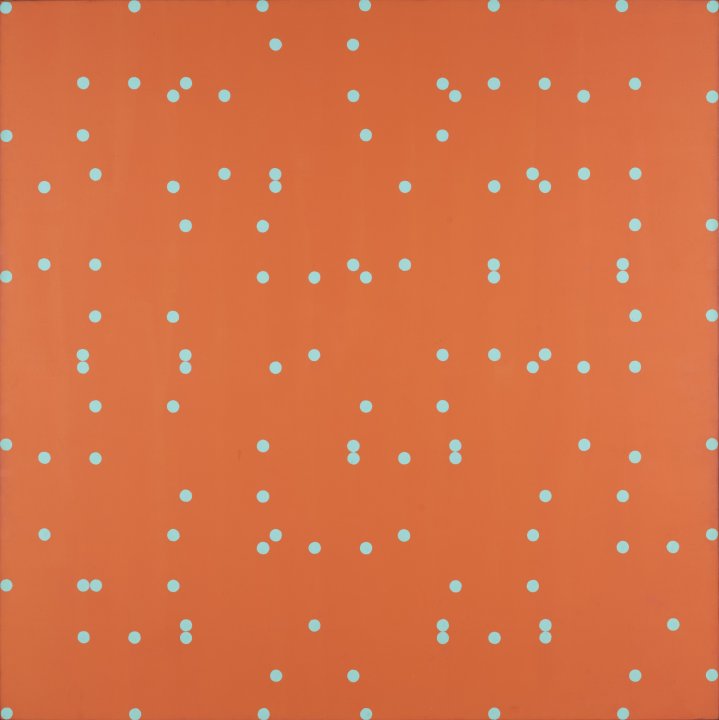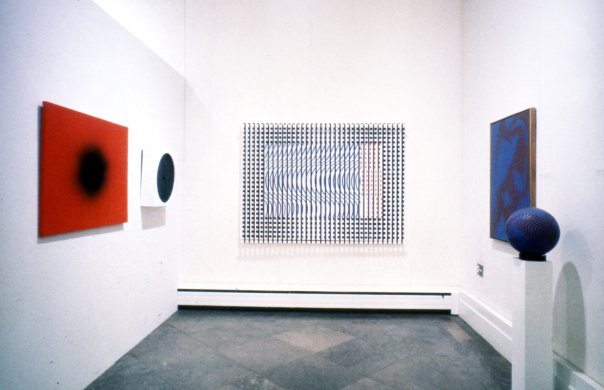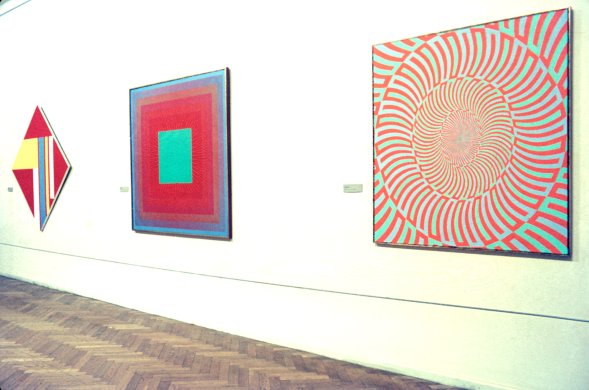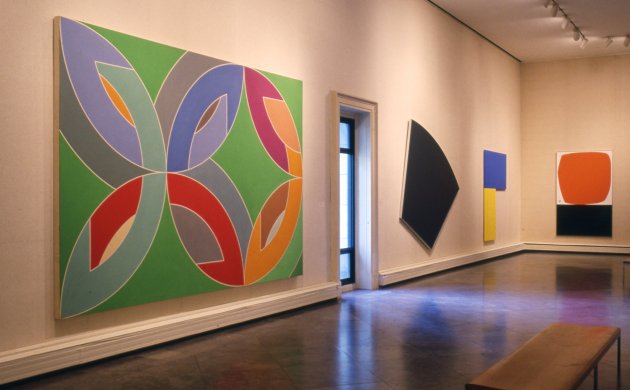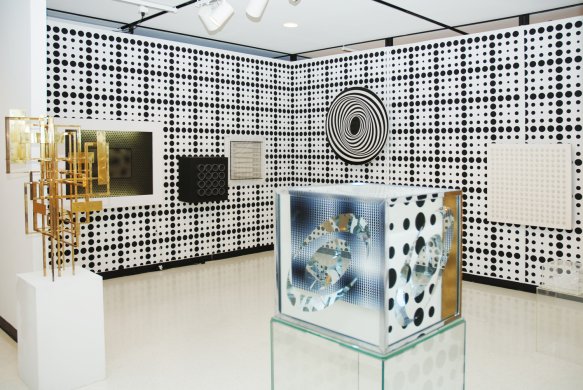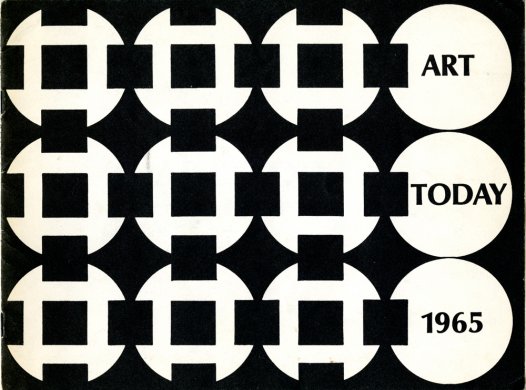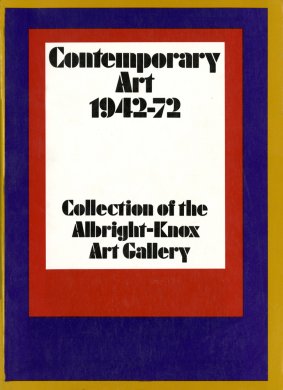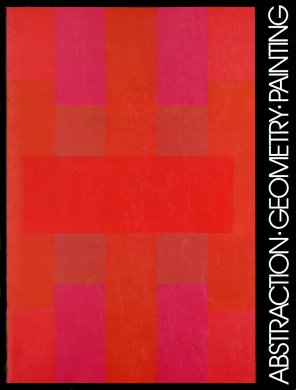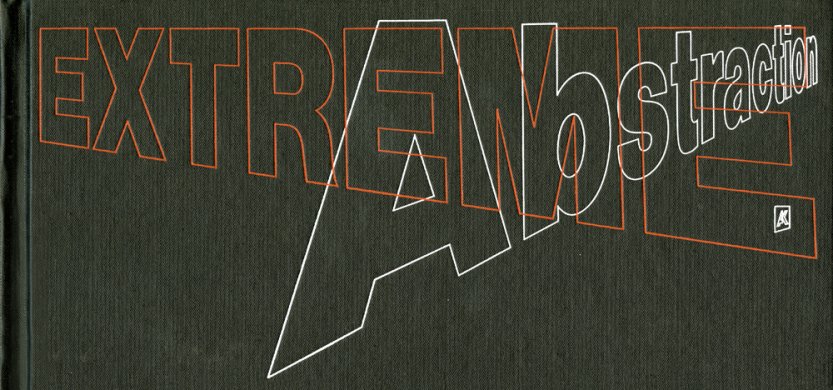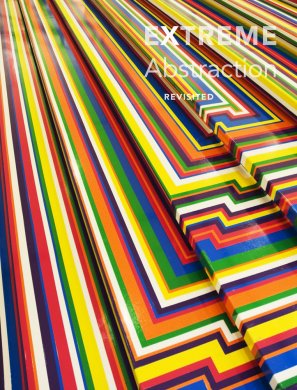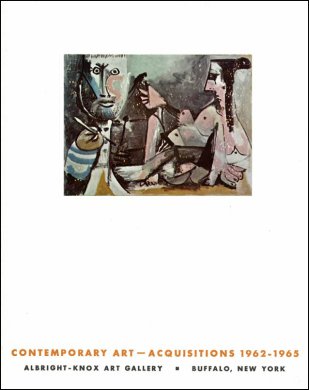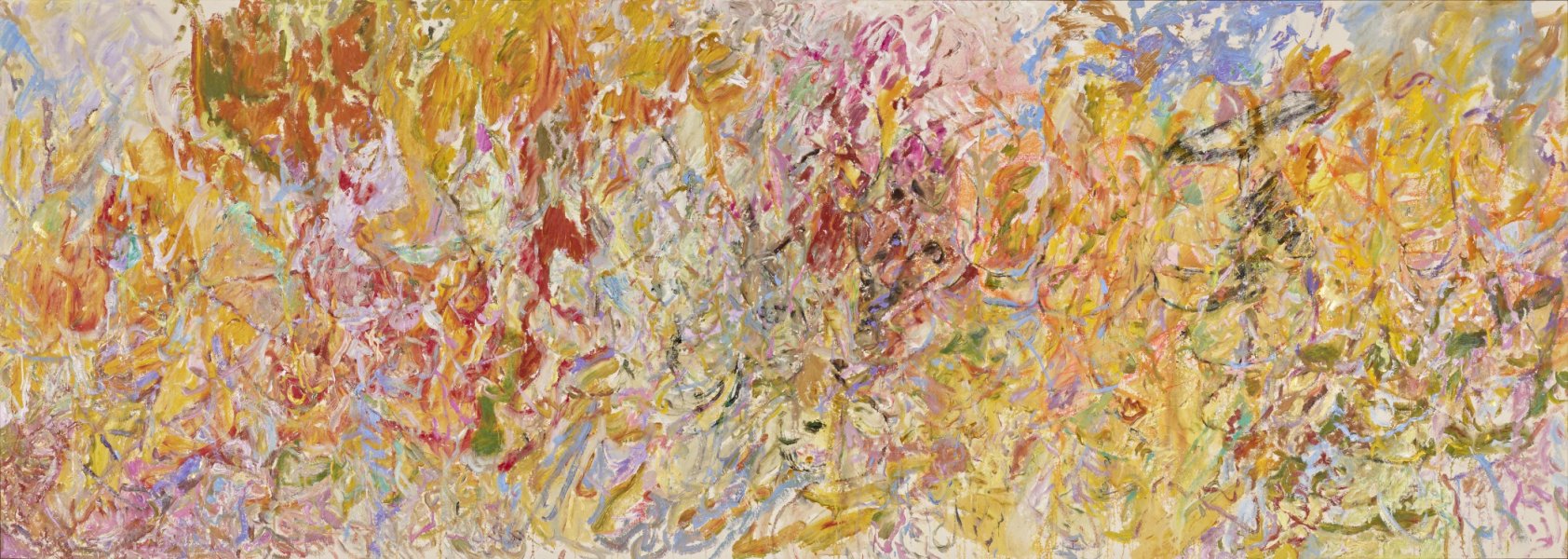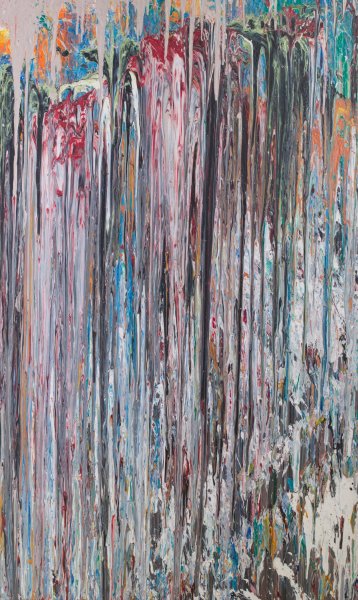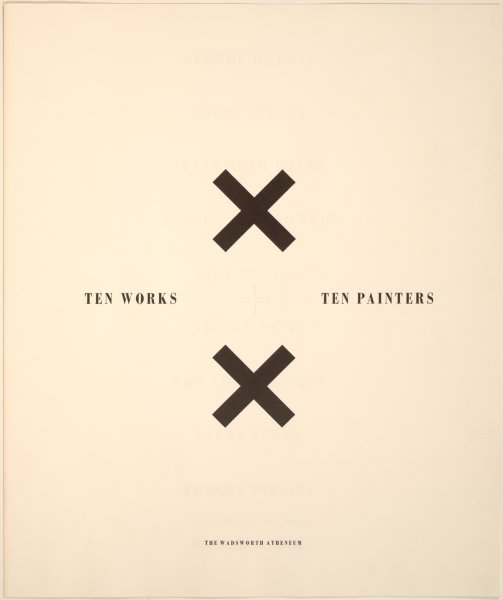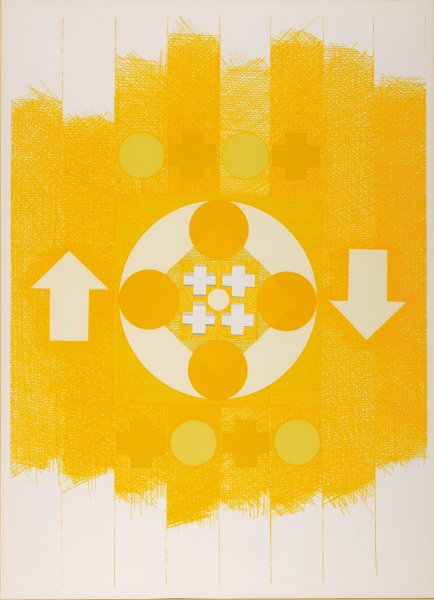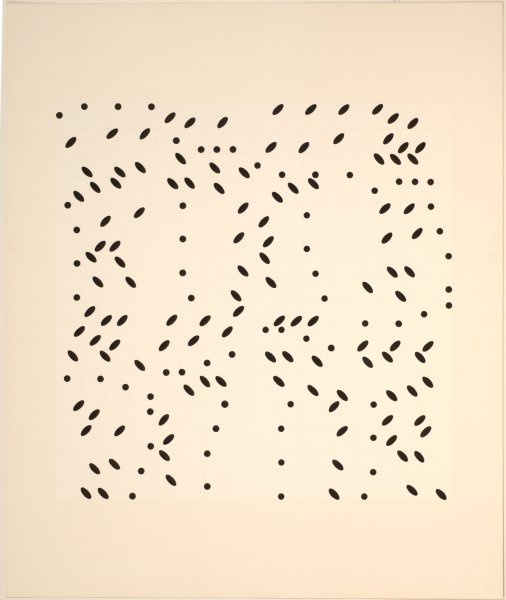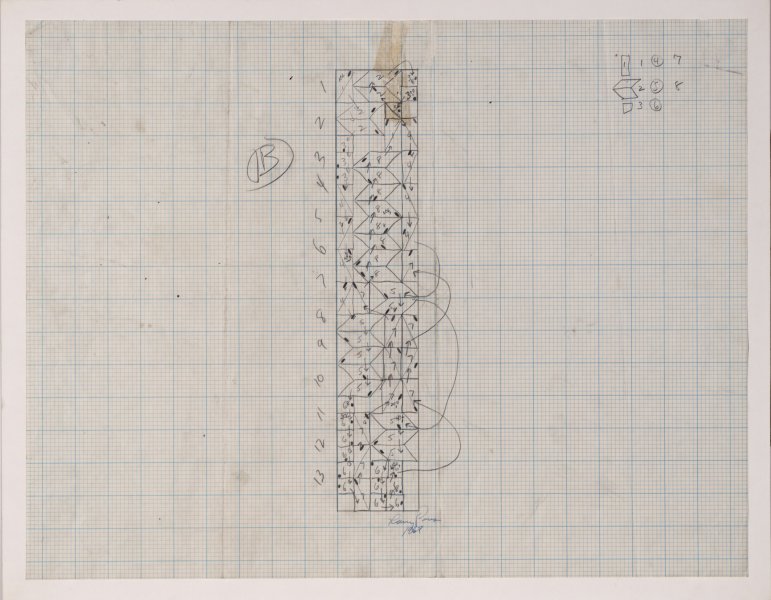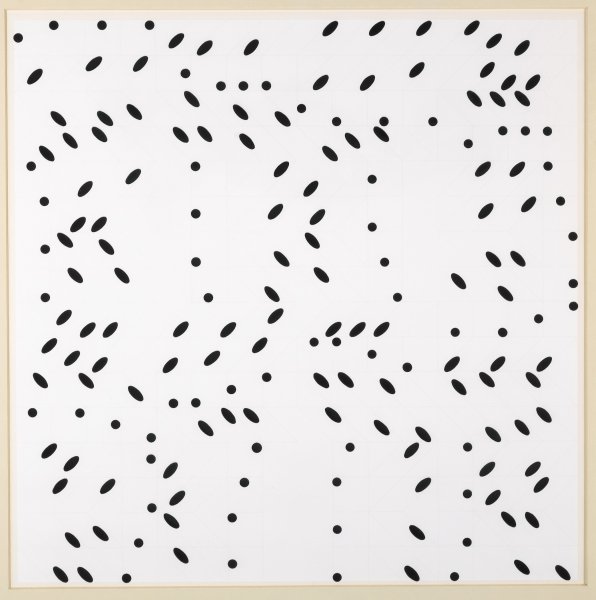Larry Poons
American, born Japan, 1937
Orange Crush, 1963
Artwork Details
Currently on View
Collection Highlight
Materials
acrylic on canvas
Measurements
support: 80 x 80 inches (203.2 x 203.2 cm); framed: 82 x 82 inches (208.28 x 208.28 cm)
Collection Buffalo AKG Art Museum
Credit
Gift of Seymour H. Knox, Jr., 1964
Accession ID
K1964:2
Larry Poons rose to prominence during the 1960s Op art movement with a series of seeming monochromes whose uniform surfaces are interrupted by patterns of elliptical or circular shapes. Such imagery, which Poons based in elements of design and color theory, can have additional perceptual effects. Inspired by the popular American soft drink, Orange Crush is one of the artist’s earliest optical paintings. Although the blue-green dots across its surface initially appear as if they were arbitrarily placed, he carefully calculated their layout and made preparatory drawings. Here, the underlying pencil grid and traces of circles placed elsewhere in the final configuration remain visible. While no two viewers will have exactly the same experience when encountering this painting, the artist compels your eyes to move continually around the canvas by intentionally omitting any central focus within the work’s composition. Eventually, the dots may appear as if they are pulsating. If you were to look at a white wall immediately after staring at Orange Crush, an afterimage of their arrangement—floating in space like musical notes freed from their written score—may materialize.
